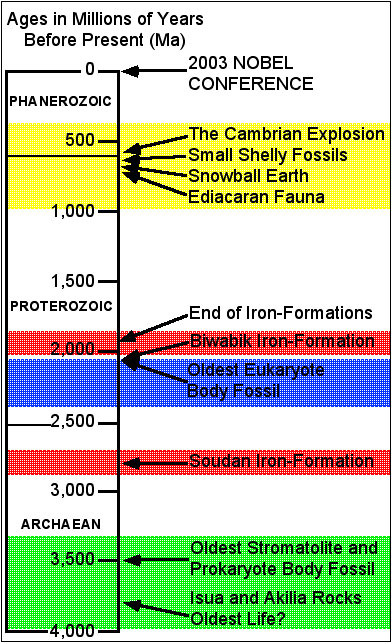The true nature of the famous ‘Cambrian Explosion’ is really an amazing increase in the abundance and diversity of animals with mineralized skeletons. Why did skeletons evolve in the first place? It takes a lot of energy and demanding physical-chemical conditions to produce a skeleton. The more popular theories include the need for protection against newly evolved predators, the necessity for increased rigidity to exploit new habitats, and the development of firm platforms for muscle attachment. Whatever the reason, skeletons have obviously proved highly successful!
These samples represent the oldest skeletons ever recovered; both samples date from the late Neoproterozoic. The small cones, Cloudina, have been interpreted to be either small shells for a mollusc-like organism or perhaps sclerites, analogous to plates in a suit of armor. The larger shapes, Namacalathus, is not as easily explained. Their occurrence in dense reef-like accumulations suggests a coral-like affinity.
Quick Links to: Introduction Oldest Rocks on Earth Oldest Fossils Prokaryotes vs. Eukaryotes Oldest Eukaryotes Oxygenation of the Atmosphere Ediacaran Fauna Snowball Earth Oldest Skeletons Pre-Cambrian/Cambrian Boundary Links for more information
